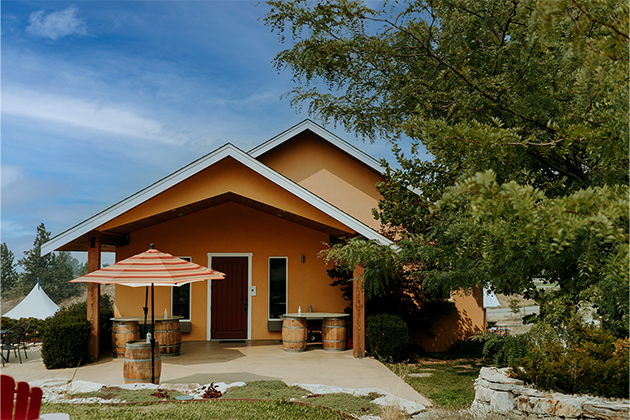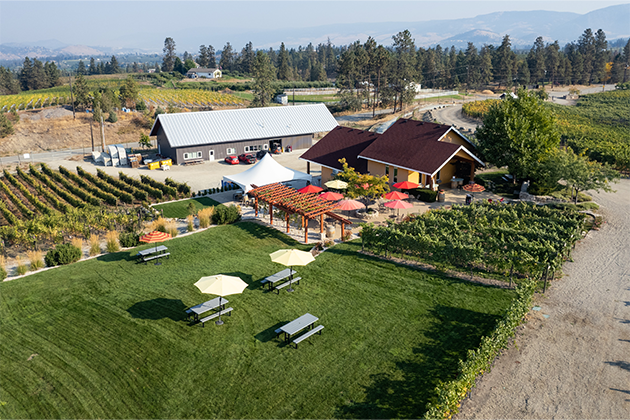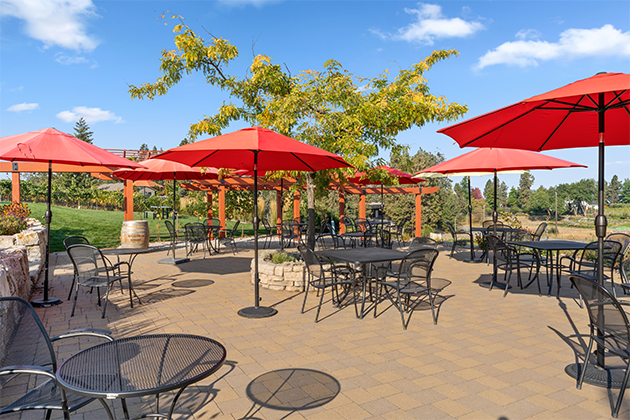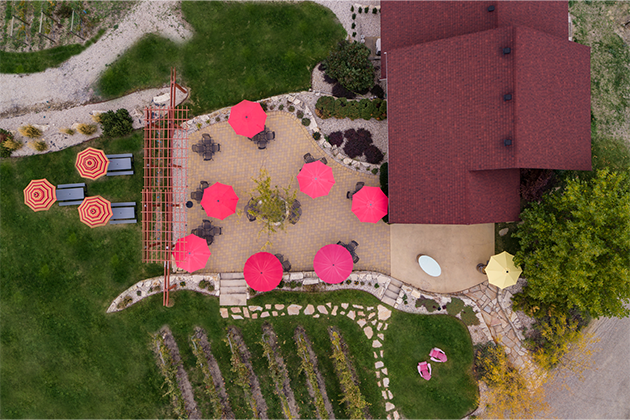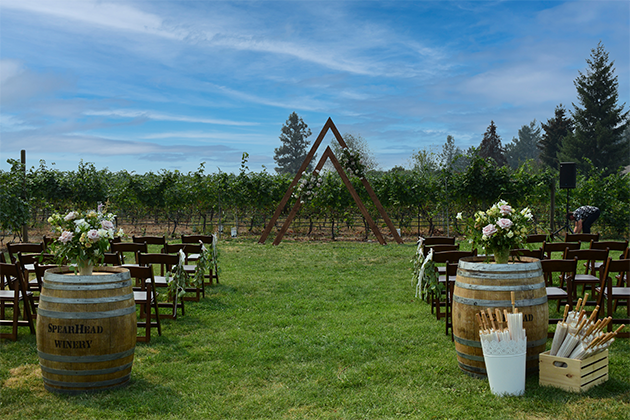About SpearHead Winery

Our Team
Our vineyard and winemaking teams are led by Grant Stanley. A highly respected BC winemaker, Grant has been at the helm as our Winemaker/General Manager for a few years now and he has transformed our winemaking program. His commitment to showcasing specific terroirs of the Central Okanagan Valley is evident in the ‘single vineyard’ program we have developed for our pinot noir bottlings. These wines display the unique attributes of the Okanagan vineyards that they were sourced from. We also produce blended Pinot Noirs which combine the characteristics of different vineyards, including our benchmark Cuvee. We have extended this exclusive approach to winemaking to other varietals including our Chardonnay which is made from a single clone.
Our department heads collaborate with Grant to achieve a common goal: to produce premium quality wine.

Grant Stanley
Winemaker & General Manager
Grant is a dual citizen of Canada and New Zealand; the latter is where he began his career working in the vineyards of Marlborough.
Read more about Grant
Equipped with winery internships and diplomas in viticulture and winemaking from Nelson Marlborough Institute of Technology he moved to the North Island where he became a willing and humble slave to the high priests of Pinot Noir in Martinborough. His A-type personality soon led him to become compulsive, obsessive and devoted to Pinot Noir. In 2003, after 15 vintages with prestigious wineries in New Zealand and Oregon’s Willamette valley he was attracted to the incredible potential for growing and making high quality Pinot Noir in the Okanagan Valley. Since moving to the Okanagan Valley Grant has become well known for his winemaking style and his dedication to the improvement of growing and making Pinot Noir. His continuous collaboration with fellow winemakers and viticulturists helps drive this initiative. If you can’t find him in the vineyard or winery, he will most likely be on a tennis court.

Jennifer Tocher
Wine Club & Marketing Manager
Jennifer has focused her working life in the hospitality sector. She has gained experience both locally and internationally and has spent majority of the last twenty years in the Okanagan.
Read more about Jennifer
Jennifer has enjoyed watching the local wine industry expand and grow over the last two decades and is proud to continue to be a part of it.
You may already know her as she has had the pleasure of working for some well-known local wineries including; Quails Gate, Cedar Creek, and Painted Rock Winery. She holds a Bachelors Degree in Business Administration with a major in Hospitality Management and currently has her level 3 WSET.
Other than her passion for wine, Jennifer also enjoys cooking and dining out, outdoor activities, and exploring the world.

Lisa Janzen
Vineyard Manager
Lisa comes from a family of entrepreneurs and hospitality managers. Her father pioneered the customer service scene in the Okanagan, mentoring Lisa from a young age.
Read more about Lisa
Her knowledge and passion for food and wine stems from this. After a decade spent in the food and beverage industry Lisa decided to switch gears and return to school. She obtained her Diploma in Viticulture though Okanagan College in Penticton and joined the Spearhead team in 2013. Over the course of her career at Spearhead she has primarily led the vineyard team, though you may recognize her as she is active in harvest, wine club, and special events.

Jenny Simpson
Wine Shop Manager
Jenny has lived all over Canada though most of her time spent has been in Calgary. She has a degree in Arts and History from the University of Calgary and had a fulfilling career in the investment industry.
Read more about Jenny
Travel has taken Jenny to several places around the globe and triggered her love of wine and the story behind each bottle.
Her fascination with wine leads her to feed her appetite for wine education. Jenny holds her WSET Level 3, International Sommelier Guild Level 2, Canadian and French Wine Scholar, Alsace Masters Certificate, and is currently in the Bordeaux Master Program.
You may already know Jenny from her time at Willow Park Wines & Spirits, Urban Liquor Store, or Tantalus Vineyards.

Our Vineyards
SpearHead Winery is composed of our home estate in Kelowna, and a variety of grower owned vineyards that we source from in East Kelowna, Summerland, and Naramata.
In 2025, following two consecutive extreme cold events, we replanted our estate vineyard with a renewed focus on quality and resilience. The vineyard has been carefully re-mapped to place Pinot Noir in the most favorable sites, alongside plantings of Chardonnay, Riesling, and Marquette. Our Pinot Noir selections include Dijon Clones 777, 828, 943, and 115, while our Chardonnay is exclusively Clone 95, a local favorite. Some of our Riesling is own-rooted, offering added hardiness for harsh winters. Marquette, a cold-hardy hybrid developed at the University of Minnesota and a grandchild of Pinot Noir, brings exceptional potential for producing high-quality wines in cooler climates.
At the moment, our focus is on nurturing these young vines and encouraging them to establish strong roots. We look forward to the day when we can once again share wines made from our home estate.

SpearHead Vineyard
Location: benchlands of south east Kelowna
Elevation: 1,540 to 1,560 ft
Exposure: undulating with predominantly southern and northern
Soil: glacial loam consisting of sand, silt and clay
Varietals Planted: Pinot Noir, Chardonnay, Riesling, Marquette
Vineyard Age: 2025
Vineyard Manager: Lisa Janzen
Fun Fact: The ‘Saddle Block’ is named for its contours and is home to the original Pinot Noir plantings. SpearHead also has the ‘Red Tail Block’, ‘Orchard Block’ and ‘The Slope’.

Blueberry Hill Vineyard
Location: benchlands of Summerland
Elevation: 1,650 to 1,730 ft
Exposure: undulating with predominantly southern and northern
Soil: sandy gravel
Varietals Planted: Pinot Noir, Chardonnay, Gamay
Fun Fact: The Blueberry Hill Vineyard is part of the Summerland Bench sub GI.

Braided Hill Vineyard
Location: benchlands of south east Kelowna
Elevation: 1,542 to 1,558 ft
Exposure: undulating with east and west facing slopes
Soil: glacial loam consisting of sand, silt and clay
Varietal Planted: Pinot Noir, Chardonnay
Clones: Dijon 777 and 115
Vineyard Age: 2020
Fun Fact: This vineyard demonstrated remarkable resilience during the recent cold event, thanks to its gently rolling slopes and protective tree lines that shielded it from frost pockets and harsh winds.

Duncan Vineyard
Location: benchlands of Naramata
Exposure: south west facing
Varietals Planted: Chardonnay (100% Clone 95)
Vineyard Manager: Graham Duncan
Fun Fact: This vineyard receives afternoon sun during the growing season aiding in optimal ripeness.
We are low on Chardonnay but you can likely still find this wine in magnum format!
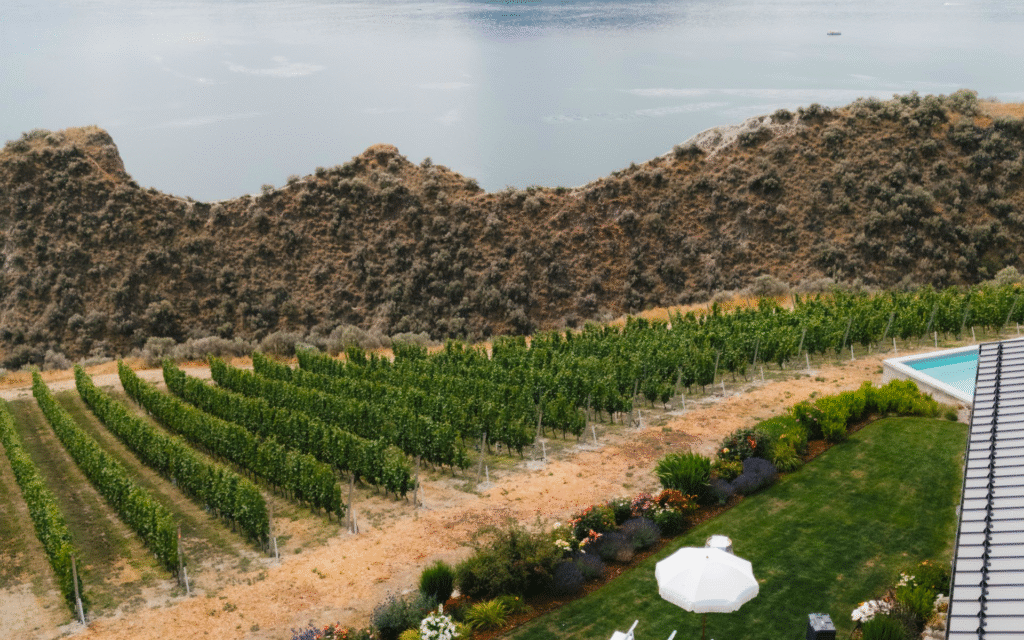
Jagged Ridge Vineyard
Location: Naramata Bench sub-GI
Elevation: 2,133 ft
Exposure: west facing slope
Soil: loam, bedrock, silt
Varietals Planted: Pinot Noir (Dijon clone 943 and 115)
Vineyard Age: 2020
Fun Fact: Pinot Noir Clone 943 is known for producing wines with intense color, firm structure, and complex aromatics – a new favourite among wine club members.
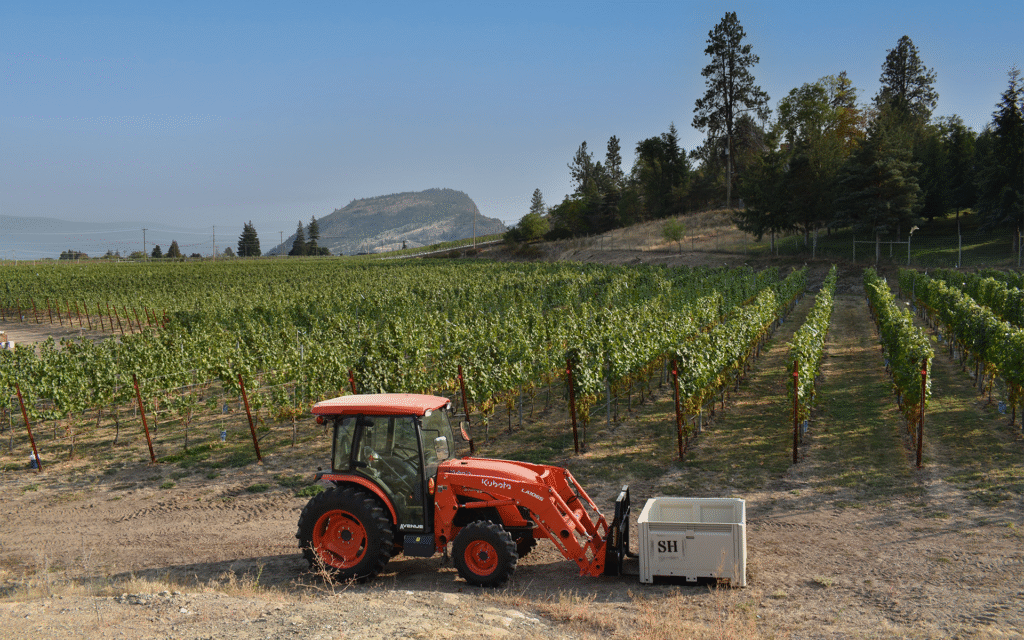
Iron Acre Vineyard
Location: Summerland Bench sub-GI
Varietals Planted: Pinot Noir and Chardonnay

Coyote Vineyard
Location: near McDougall Rim in West Kelowna
Elevation: 1,300 ft
Exposure: south facing
Soil: volcanic
Varietals Planted: Pinot Noir, (100% Clone 115)
Vineyard Age: 2008
If you have any of these wines in your cellar, enjoy them. 🙂

Golden Retreat Vineyard
Location: just north of Summerland
Elevation: 1,490 ft
Exposure: predominantly south facing, overlooking Okanagan Lake
Soil: sandy loam with gravel seams at root depth
Varietals Planted: Pinot Noir and Pinot Gris
Vineyard Age: 2008 & 2009
If you have any of these wines in your cellar, enjoy them. 🙂
A Look Around

